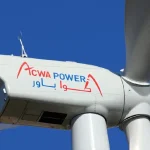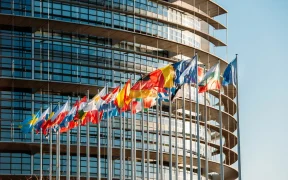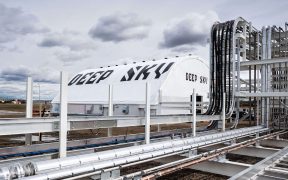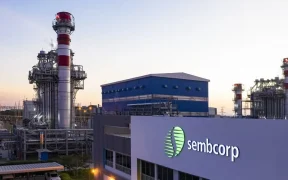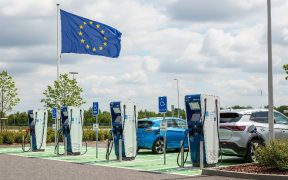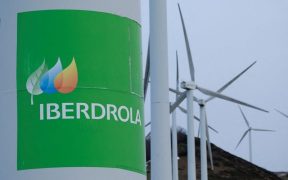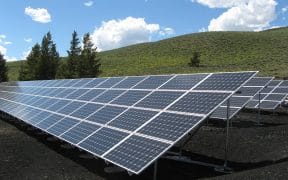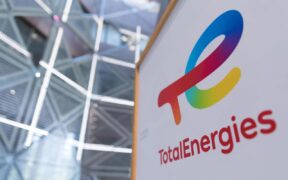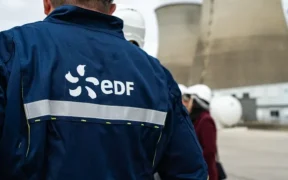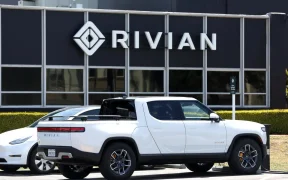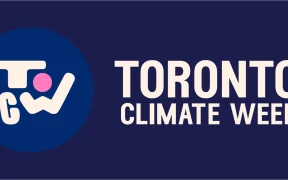Biden-Harris Administration Exceeds 25 Gigawatt Clean Energy Target on Public Lands

The Biden-Harris administration announced a series of historic milestones and actions to promote responsible clean energy development on public lands and help achieve President Biden’s goal of creating a carbon pollution-free power sector by 2035.
Secretary of the Interior Deb Haaland announced that the Department has now permitted more than 25 gigawatts of clean energy projects – surpassing a major milestone ahead of 2025 – enough clean energy to power more than 12 million homes across the country. This includes solar, wind and geothermal projects, as well as gen-tie lines on public lands that are essential for connecting clean electricity projects on both federal and non-federal land to the grid.
“Since Day One, the Biden-Harris administration has worked tirelessly to expand responsible clean energy development to address climate change, enhance America’s energy security and create good-paying union jobs. Surpassing our goal of permitting 25 gigawatts of clean energy by 2025 underscores the significant progress we have made in helping build modern, resilient climate infrastructure that protects our communities from the worsening impacts of climate change,” said Secretary Deb Haaland. “The Interior Department will continue to advance projects that will add enough clean energy to the grid to power millions more homes and help ensure a livable planet for future generations.”
The Department also announced a final Renewable Energy rule from the Bureau of Land Management (BLM) that will lower consumer energy costs and the cost of developing solar and wind projects, improve renewable energy project application processes, and incentivize developers to continue responsibly developing solar and wind projects on public lands. Consistent with the Biden-Harris administration’s commitment to create high-quality jobs in the clean energy economy and support American manufacturing, the final rule includes additional incentives for use of project labor agreements and American-made materials.
“Our public lands are playing a critical role in the clean energy transition,” said Acting Deputy Secretary Laura Daniel-Davis. “Finalizing the Renewable Energy Rule is a significant milestone that will allow the Interior Department to continue leading the way on renewable energy while furthering President Biden’s commitment to building a clean energy economy, tackling the climate crisis, protecting lands and waters, promoting American energy security, and creating jobs in communities across the country.”
In addition, the BLM announced that two solar projects – the Arica and Victory Pass projects in California – are now fully operational, adding 465 megawatts of clean electricity to the grid. With these two projects coming online, more than 10 gigawatts of clean energy are currently being generated on public lands, powering more than 5 million homes across the West.
“Renewable energy projects like Arica and Victory Pass on public lands create good-paying jobs and are crucial in achieving the Biden-Harris administration’s goal of a carbon pollution-free power sector by 2035,” said BLM Director Tracy Stone-Manning. “Investing in clean and reliable renewable energy represents the BLM’s commitment to addressing climate change. BLM personnel are working tirelessly to efficiently review and approve projects, with significant and thoughtful engagement from states, Tribes and other partners, to ensure we supply families and communities with clean energy that will lower costs and help tackle climate change.”
Surpassed President Biden’s Goal of 25 Gigawatts by 2025
The Department and BLM have worked diligently to review and approve dozens of new clean energy projects, including solar, wind, and geothermal projects, as well as interconnected gen-tie lines that are vital to clean energy projects proposed on non-federal land.
The announcement that the Department has surpassed the goal to permit 25 gigawatts of renewable energy includes the approval of more than double the number of projects than were approved during the previous Administration. The Department has now permitted nearly 29 gigawatts of clean energy – enough to power more than 12 million homes across the country. In addition to specific project approvals, the Department has also leased eight new areas in Solar Energy Zones with the capacity to generate nearly 2.5 gigawatts of additional clean energy.
As the Department continues its momentum to spur a clean energy future, the BLM is currently processing permits for an additional 66 utility-scale clean energy projects proposed on public lands in the western United States. These projects have the combined potential to create thousands of good-paying jobs, add more than 32 additional gigawatts of renewable energy to the western electric grid and power millions of more homes. The BLM is also undertaking a preliminary review of about 200 applications for solar and wind development, as well as more than 100 applications for solar and wind energy site area testing. The BLM continues to track this clean energy permitting progress through an online dashboard.
These investments in a clean energy future help further the President’s Bidenomics strategy and Investing in America agenda, which are growing the American economy from the middle out and bottom up – from rebuilding our nation’s infrastructure, to driving over half a trillion dollars in new private sector manufacturing and clean energy investments in the United States, to creating good-paying jobs and building a clean energy economy that will combat the climate crisis and make our communities more resilient.
Finalized Renewable Energy Rule to Continue Responsible Development
The Department also announced the update of its renewable energy regulations to promote the development of solar and wind energy on public lands. The final Renewable Energy Rule will reduce capacity fees for these projects by 80 percent and facilitate development in priority areas by streamlining application review, delivering greater certainty for the private sector and the opportunity for more clean energy for American households.
The Energy Act of 2020 authorized the BLM to reduce acreage rents and capacity fees to promote the greatest use of wind and solar energy resources. The BLM initially reduced these fees through guidance in 2022. The final rule codifies further reductions, improving financial predictability for developers pursuing long-term projects on public land.
The final Renewable Energy Rule will facilitate development in identified priority areas for wind and solar energy while maintaining appropriate flexibility to ensure a fair return for the use of public lands. It expands the BLM’s ability to accept leasing applications in these priority areas without first going through a full auction but retains the BLM’s ability to hold competitive auctions where appropriate.
The final rule continues the Biden-Harris administration’s commitment to creating American manufacturing jobs while helping to build a clean energy economy, including by providing financial incentives for developers to use project labor agreements and domestic materials. The BLM sought comment on these additional incentives in last year’s proposed rule and developed the final provisions following public feedback, including from labor unions and a wide range of clean energy industry stakeholders.
The rule also complements the BLM’s ongoing efforts to advance responsible clean energy development by updating the Western Solar Plan. The BLM is currently taking comment on a draft analysis of the Utility-Scale Solar Energy Programmatic Environmental Impact Statement, with the goal of streamlining the BLM’s framework for siting solar energy projects across the West in order to support current and future national clean energy goals, long-term energy security, climate resilience, and improved conservation outcomes.
Announced California Solar Projects are Fully Operational
In another step towards achieving President Biden’s vision of a fully carbon pollution-free power sector by 2035, the Department announced the Arica and Victory Pass solar projects are both fully operational. These projects, the first two approved under the Desert Renewable Energy Conservation Plan (DRECP), are located in eastern Riverside County, California. With the completion of these two solar projects, the BLM has also surpassed 10 gigawatts of renewable energy generation from projects on public lands.
The two projects represent a combined infrastructure investment of about $689 million, will generate $5.9 million in annual operational economic benefit, provide power to nearly 139,000 homes, and add up to 465 megawatts of clean energy generating capacity and 400 megawatts of battery storage. The Department issued final approval for construction of the Arica and Victory Pass solar projects in 2022.
The DRECP is a landscape-level plan created in collaboration with the State of California for more than 22 million acres, focused on 10.8 million acres of public lands, in the desert regions of seven California counties that balances renewable energy development with the conservation of unique and valuable desert ecosystems and outdoor recreation opportunities. To approve these sites for renewable energy projects, the Department and the BLM worked with Tribal governments, local communities, state regulators, industry and other federal agencies.
Related Article: Chevron’s Clean Energy Division Invests in ION Clean Energy
The BLM today also announced the beginning of construction for the Camino Solar project in Kern County, California. The 44-megawatt solar photovoltaic facility is expected to power nearly 13,400 homes. The project will employ around 150 people during peak construction, include a 34.5-kV underground electrical collector line, and connect to the existing Southern California Edison Whirlwind Substation through the Manzana Wind Substation and associated 220 kV generation-tie line.

